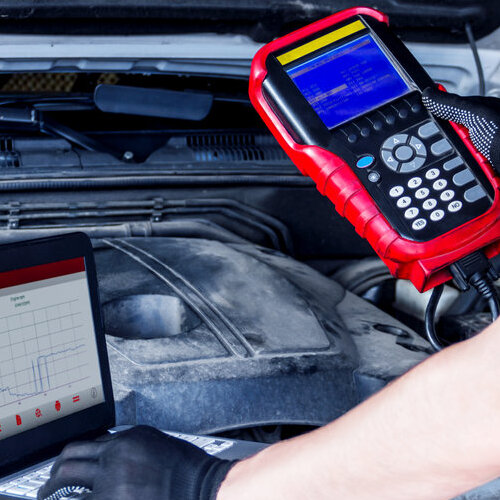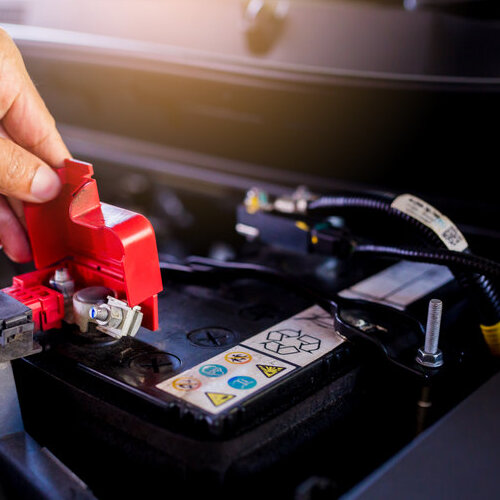
Get Your Motor Running
You’ve got oil in the engine, gas in the tank, air in the tires, and your car is ready to go! Until there is an issue with your car’s electrical system. Car electrical system repairs can, unfortunately, be challenging to pinpoint and resolve. When you realize how many electrical components in a car, you probably wonder – how in the world does all that work together?
In general, it takes a person that has been trained and who has the proper experience to know how an electrical system works in a car. That person may not be your usual mechanic because just as doctors have specialties, so do mechanics and technicians. So when you need car electrical system repairs, your usual mechanic may hand the job over to one of their counterparts.
What is the importance of the automotive electrical system?
The first important thing to know about a car electrical system is that it provides the electrical current your car needs to start. And once your car starts, it powers other important components within your car. From the ignition that starts your car and the fuel system that keeps your car going, without the electrical system powering them, nothing would happen.
And it goes beyond starting and powering your car. The battery depends on the electrical system and the electrical system depends on the battery. Often, when a battery goes bad or is installed wrong, it can create a need for car electrical system repair services. In addition, the automotive electrical lighting system, including the turn signals and emergency flashers and even any alarms you have installed, all depend on the electrical system to be in working order.
What are the major components of the electrical system in a car?
There are many different components and parts to an electrical system of a car, but the three main ones are:
- The battery
- The alternator
- The starter
All three of these component must be synchronized to work together in order for your car to start and to keep running. If one of the other goes out, the other two can’t do their job. Additionally, each of them can cause other problems that require professional car electrical system repair service.
How do I check the electrical system in my car?
Dealing with a car that won’t start is frustrating, and if it isn’t the battery, the situation can be really frustrating. This is not only possible but common in newer cars. The electrical system in cars today is much more complicated and extensive than in cars made 20 years ago.
Technological advancements have been great in many ways, but they have also created a car electrical system repair nightmare too. Diagnosing car electrical issues is a challenge, but a few things you should be aware of are:
- Engine Not Starting Correctly
Electrical power is needed for your car to start; this comes from the battery. If your car isn’t starting, it may be the battery or it could a host of other things. If there is clicking while you’re trying to start it, it may be the alternator or starter.
- Problem with the Battery
A battery that is dead or discharged is definitely needing car electrical system repair, which is simply replacing the battery. Or it could be corroded battery cables, incorrect battery connection, etc.
- Malfunctioning Lights
The lights on your car are critical for safety. The brake lights, headlights, turn signals and more. They all play a part in keeping you and others around you safe while on the road.
- Blown Fuses
The fuse prevents your car’s electrical system from short-circuiting and going over voltage. If the fuses keep blowing for indiscernible reasons, you need to schedule car electrical system repair service as soon as possible.
- Burning Plastic Odor
If your car is exhibiting any of the electrical symptoms we’ve mentioned and you’re smelling burning plastic, don’t wait to schedule a car electrical system repair. Take the car immediately to a mechanic. There could be a problem within the automotive relay that needs to be replaced.
What is an automotive relay?
Your car will have several automotive relays. Every vehicle, regardless the make or model, has them; they are what enables a small current flow circuit to have control and operate the higher current circuit.
How do you wire an automotive relay?
There should be an automotive relay for every circuit that is added to a modern car. Cars today come from the factory with light gauged wiring that is not able to handle additional electrical loads like sound systems. A relay will provide power to a new circuit without drawing much from the current of the original wiring.
Step 1: Connect relay terminal 87 to the car body or the battery negative terminal with 18-gauge primary wire and solder-less female spade connector and a solder-less ring terminal.
Step 2: Connect relay terminal 85 to a car’s circuit breaker and connect the circuit breaker to another terminal, and then to the battery’s positive terminal with a primary wire that can handle the device you are adding to the current load.
Step 3: Connect relay terminal 86 to the new device you’re adding that needs power with the same gauge wire you used for terminal 85.

In Closing
Once you have wired your automotive relay, you’ll want to test it to make sure it doesn’t blow out any fuses and need professional car electrical system repair. So, how do you test an automotive relay?
Testing an automotive relay is done with a multimeter by removing the relay from the fuse box and set the multimeter to DC voltage. Then switch the cab activated and check for the 85 position to have 12 volts where the relay plugs into the fuse box. By doing all this, you can have your car back on the road in no time – and if you still need assistance, we can always be there for you.